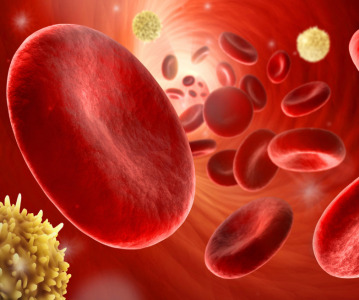New Tysabri Analysis Shows Improved Walking Speed in Significant Number of MS Patients

Biogen Idec has announced that a post hoc analysis of data from the AFFIRM study shows Tysabri (natalizumab) significantly increased the proportion of relapsing-remitting multiple sclerosis (RRMS) patients with confirmed improvement in walking speed (CIWS) relative to placebo at 2 years.
Additional data from observational registry studies show that switching to Tysabri after experiencing a multiple sclerosis (MS) relapse while taking interferon beta (IFNβ) or glatiramer acetate (GA) reduced the risk of future relapses and treatment discontinuation. These data were presented at the 66th American Academy of Neurology (AAN) annual meeting in Philadelphia, Pa. (26 April–3 May 2014).
“We know that MS has a significant impact on ambulation — a key concern for many people living with this disease — which is why we analysed data from AFFIRM to evaluate the potential impact of Tysabri on walking speed,” said Alfred Sandrock, MD, PhD, group senior vice president and chief medical officer at Biogen Idec. “TYSABRI was associated with a 20% increase in walking speed, a clinically relevant improvement, in a significantly greater number of patients compared to placebo.”
Walking Speed Impacted with TYSABRI
AFFIRM was a 2-year, randomised, multi-center, placebo-controlled, double-blind study of 942 patients with RRMS that evaluated the effect of Tysabri on the progression of physical disability and the rate of clinical relapses. A post-hoc analysis of AFFIRM assessed the impact of TYSABRI on the proportion of patients with CIWS compared to placebo. CIWS was defined as ≥20% increase in walking speed from baseline in the timed 25-foot walk (T25FW) confirmed 12 weeks later.
Results show that, over the course of 2 years, CIWS was significantly associated with improvement in patient-reported physical functioning. Treatment with Tysabri increased the proportion of patients with CIWS at year two by 79% compared to placebo (Tysabri, 12.3%; placebo 6.9%; p=0.0133). These effects were more significant and occurred earlier in patients with more advanced disability — with CIWS being increased by as much as five-fold compared to placebo at one year.
While many MS clinical trials measure disability progression, which includes a measure of ambulation by the Expanded Disability Status Scale (EDSS), these data from AFFIRM suggest that CIWS may be a more sensitive endpoint in capturing improved ambulation in RRMS patients.
Related News
-
News Google-backed start-up raises US$600 million to support AI drug discovery and design
London-based Isomorphic Labs, an AI-driven drug design and development start-up backed by Google’s AI research lab DeepMind, has raised US$600 million in its first external funding round by Thrive Capital. The funding will provide further power t... -
News AstraZeneca to invest US$2.5 billion in Beijing R&D centre
Amid investigations of former AstraZeneca China head Leon Wang in 2024, AstraZeneca have outlined plans to establish its sixth global strategic R&D centre in China. Their aim is to further advance life sciences in China with major research and manufact... -
News Experimental drug for managing aortic valve stenosis shows promise
The new small molecule drug ataciguat is garnering attention for its potential to manage aortic valve stenosis, which may prevent the need for surgery and significantly improve patient experience. -
News How GLP-1 agonists are reshaping drug delivery innovations
GLP-1 agonist drug products like Ozempic, Wegovy, and Mounjaro have taken the healthcare industry by storm in recent years. Originally conceived as treatment for Type 2 diabetes, the weight-loss effects of these products have taken on unprecedented int... -
News A Day in the Life of a Start-Up Founder and CEO
At CPHI we work to support Start-Up companies in the pharmaceutical industry and recognise the expertise and innovative angles they bring to the field. Through our Start-Up Programme we have gotten to know some of these leaders, and in this Day in the ... -
News Biopharmaceutical manufacturing boost part of new UK government budget
In their national budget announced by the UK Labour Party, biopharmaceutical production and manufacturing are set to receive a significant boost in capital grants through the Life Sciences Innovative Manufacturing Fund (LSIMF). -
News CPHI Podcast Series: The power of proteins in antibody drug development
In the latest episode of the CPHI Podcast Series, Lucy Chard is joined by Thomas Cornell from Abzena to discuss protein engineering for drug design and development. -
News Amgen sues Samsung biologics unit over biosimilar for bone disease
Samsung Bioepis, the biologics unit of Samsung, has been issued a lawsuit brought forth by Amgen over proposed biosimilars of Amgen’s bone drugs Prolia and Xgeva.
Position your company at the heart of the global Pharma industry with a CPHI Online membership
-
Your products and solutions visible to thousands of visitors within the largest Pharma marketplace
-
Generate high-quality, engaged leads for your business, all year round
-
Promote your business as the industry’s thought-leader by hosting your reports, brochures and videos within your profile
-
Your company’s profile boosted at all participating CPHI events
-
An easy-to-use platform with a detailed dashboard showing your leads and performance







.png)